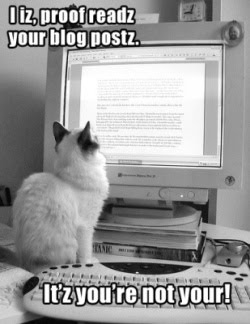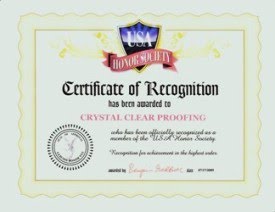Many variables create the lay and lie conundrum. Not only are they irregular verbs, but other issues arise when dealing with these two words and their various forms:
The past tense of one form is the present tense of another, i.e., the past tense of lie is lay.
Lay is also a present tense verb.
One of them, lie, can also refer to an untruth.
Lay means to put down, or to place.
It is a transitive verb and requires an object.
Lie means to recline, or occupy a location.
It is an intransitive verb and does not have an object.
Tip from CCP: A good way to remember which has an object and which doesn't is LIE. When using it to reference an untruth it has a negative connotation, so think of the fact that it does NOT have an object.
Therefore, you LAY a book on a table, and you LIE down.
(You don't lie the book on the table - you have an object. And, in the present tense, you don't lay down - you don't have an object).
Confused yet?
Here are some examples on how to conjugate these two verbs:
LAY
Remember lay is transitive and must have a direct object.
The past tense of lay is laid.
- Present tense: I lay the books on the table.
- Past tense: I laid the books on the table.
- Past participle: I had laid the books on the table.
LIE
Remember lie is intransitive and cannot have a direct object.
The past tense of lie is lay.
- Present tense: I lie down to rest.
- Past tense: Yesterday, I lay down to rest.
- Past participle: One day last week I had lain down to rest.
*****************************************************************
Substituting lay with place:
Since lay means to put down or to place, a good test in deciding whether to use lay or lie in a sentence is to *substitute the word place, placed or placing (as appropriate) for the word in question. If the substitute fits, the corresponding form of lay is correct. If it doesn't, use the appropriate form of lie.
- I will (lie or lay?) down now. (You would not say "I will place down now." Therefore, "I will lie down now" is correct.)
- I (laid or lay?) the pad on the desk. ("I placed the pad on the desk" works. Therefore, "I laid the pad" is correct.)
- I (laid or lay?) awake many nights. ("I placed awake" doesn't work. "I lay awake" is correct.)
- These files have (laid or lain?) untouched for some time. ("These files have placed untouched" doesn't work. Correct: "These files have lain untouched.")
- He has been (laying or lying?) down on the job. ("He has been placing down on the job" doesn't work. Correct: "He has been lying down.")*
*Source: The Gregg Reference Manual, Sixth Edition*
***************************************************************
Even grammar "experts" have a difficult time with lay and lie, and use a cheat sheet such as the one below:
****************************************************************
PRESENT........PAST..........PAST
TENSE...........TENSE........PARTICIPLE
Lay*................Laid............Laid______to place or put down
Lie..................Lay..............Lain______to recline
*Remember - requires an object.
****************************************************************
(Special Note: "Layed" is not a word - it is "LAID.")
Today you lay the book on the table,
yesterday you laid the book on the table,
and in the past you have laid the book on the table.
You need to lie down today,
yesterday you lay down
and in the past you have lain down.
If you had printed this out, you could now lay the pages on the table and go lie down and relax after reading all this information about lay and lie.
If all else fails, at least the chart above will help you remember. Really! I wouldn't lie!
Sunday, August 30, 2009
Monday, August 24, 2009
Wait and Await
Both wait and await are verbs.
Await always takes an object: you await your destiny, etc.
Wait does not: you wait for or on something or someone.
WAIT
Wait is intransitive, (a verb or verb construction that does not require or cannot take a direct object), and a preposition must be used with it. That preposition is usually for: "I've been waiting for 2 hours."
The verb wait can come in different structures. You can just use wait on its own: "I've been waiting for the release of that book."
Wait is often used with another verb: "I waited in line for the author to make an appearance."
Very often a reference to time is mentioned when using a form of wait: "I waited for at least an hour."
Finally, speakers often mention what or who they have been waiting for: "I have been waiting for two hours for the bookstore to open."
AWAIT
Await is transitive, (a verb requiring a direct object): "I await the author's appearance."
Await, being more formal, is more commonly used in written form, as opposed to speech, when we tend to use wait for.
Remember, await isn't followed by for - wait is.
---------------------
When reading the following sentences, it's easy to "hear" that they are not grammatically correct:
I wait the release of the book.
I await for the release of the book.
Using a preposition with the correct verb, it's equally as easy to "hear" proper syntax:
I wait for the release of the book.
I await the release of the book.
----------------------
In most cases, the primary difference between wait and await is the level of formality.
Await is simply a more formal way of saying to wait for.
I await the release of the book.
I am waiting for the release of the book.
Await always takes an object: you await your destiny, etc.
Wait does not: you wait for or on something or someone.
WAIT
Wait is intransitive, (a verb or verb construction that does not require or cannot take a direct object), and a preposition must be used with it. That preposition is usually for: "I've been waiting for 2 hours."
The verb wait can come in different structures. You can just use wait on its own: "I've been waiting for the release of that book."
Wait is often used with another verb: "I waited in line for the author to make an appearance."
Very often a reference to time is mentioned when using a form of wait: "I waited for at least an hour."
Finally, speakers often mention what or who they have been waiting for: "I have been waiting for two hours for the bookstore to open."
AWAIT
Await is transitive, (a verb requiring a direct object): "I await the author's appearance."
Await, being more formal, is more commonly used in written form, as opposed to speech, when we tend to use wait for.
Remember, await isn't followed by for - wait is.
---------------------
When reading the following sentences, it's easy to "hear" that they are not grammatically correct:
I wait the release of the book.
I await for the release of the book.
Using a preposition with the correct verb, it's equally as easy to "hear" proper syntax:
I wait for the release of the book.
I await the release of the book.
----------------------
In most cases, the primary difference between wait and await is the level of formality.
Await is simply a more formal way of saying to wait for.
I await the release of the book.
I am waiting for the release of the book.
Labels:
grammar,
Wait and Await,
Word Choice,
word meaning,
word usage
Tuesday, August 11, 2009
Joint and Separate Possession
Joint and separate possessions can be confusing. There is, however, an easy way to differentiate between the two, ensuring that the dreaded apostrophe is put in the right place!
Here are sentences giving examples of both:
Joint Possession
"Sally and Amy's blogs."
(The blogs of Sally and Amy. Sally and Amy wrote more than one blog together).
Separate Possession
"Sally's and Amy's blogs."
(The blogs of Sally and the blogs of Amy. Sally and Amy each wrote more than one blog).
General consensus is that in joint possession, only the last possessor has inflection. So, in the first example, since Sally and Amy both wrote the blogs, the word that shows possession is the last - in this case, Amy.
If nouns possess something jointly (the blogs were written by both Sally and Amy), add the apostrophe and "s" showing possession to the last noun, (they are Sally and Amy's blogs).
If nouns possess something separately (the blogs Sally wrote, and the blogs Amy wrote), add the apostrophe and "s" to both nouns, (Sally's and Amy's blogs).
The "secret" is just to ask yourself, "Whose blogs are they?" If the answer is that they are the blogs of both of them (they each wrote the blogs), you have joint possession. If the blogs are Sally's and the other blogs are Amy's - separate possession.
Here are sentences giving examples of both:
Joint Possession
"Sally and Amy's blogs."
(The blogs of Sally and Amy. Sally and Amy wrote more than one blog together).
Separate Possession
"Sally's and Amy's blogs."
(The blogs of Sally and the blogs of Amy. Sally and Amy each wrote more than one blog).
General consensus is that in joint possession, only the last possessor has inflection. So, in the first example, since Sally and Amy both wrote the blogs, the word that shows possession is the last - in this case, Amy.
If nouns possess something jointly (the blogs were written by both Sally and Amy), add the apostrophe and "s" showing possession to the last noun, (they are Sally and Amy's blogs).
If nouns possess something separately (the blogs Sally wrote, and the blogs Amy wrote), add the apostrophe and "s" to both nouns, (Sally's and Amy's blogs).
The "secret" is just to ask yourself, "Whose blogs are they?" If the answer is that they are the blogs of both of them (they each wrote the blogs), you have joint possession. If the blogs are Sally's and the other blogs are Amy's - separate possession.
Subscribe to:
Posts (Atom)






























































